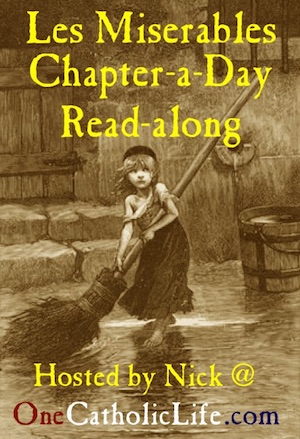The Grandeur of God – Homily for the Solemnity of Our Lord Jesus Christ, King of the Universe

Maybe it’s just me,
but this autumn seems to have been especially glorious:
colorful, vivid, bright, and seemingly lasting forever.
Lately the trees have lost some of their color,
what with the rain and the wind,
but overall it’s been a beautiful autumn.
I notice it most when I am commuting back and forth to work.
To get to St. John Vianney School in the Spokane Valley
I usually take 29th Avenue to Carnahan,
Carnahan to 8th Avenue, 8th to Park and so on.
It usually takes about 15 or 20 minutes, depending on traffic.
But this year, because of the beautiful autumn,
I have been taking the back way more often.
I start by driving south up Freya and catch the Palouse highway,
and drive across the Palouse through Valleyford,
and then on to Highway 27, where I turn left and go through Mica
and then left onto Dishman-Mica Road.
It adds about 15 minutes to my commute,
but it has been so worth it.
The farm fields have that golden glow that is so magical this time of year;
the sky is ever-changing, like the depths of the sea.
Those of you who live up there know what I’m talking about.
It has been absolutely magnificent.
Granted, for the last week or so winter has been rapidly coming on,
so it might not have quite the same character it did a couple of weeks ago,
but if you haven’t been on the Palouse Highway yet this fall,
it’s definitely still worth seeing.
If you take an hour out of your day to drive that road.
you might even find that it touches your soul.
Because that’s what nature does, right?
Whether it’s a beautiful autumn field or a backyard garden;
a snow-covered mountain, or the wild ocean,
nature can touch us deeply.
It speaks to us—to our hearts and to our souls.
And that’s because nature carries inside itself the imprint of the divine.
Jesuit poet Gerard Manley Hopkins wrote,
“The world is charged with the grandeur of God.”
Pope John Paul II said that through nature
people can “contemplate the mystery of the greatness and love of God.”
The natural world is a place to encounter the divine,
especially when we take the time to pause and notice and savor.
God speaks to us through nature.
That’s why our church calendar lines up with the seasons.
Today we celebrate the Solemnity of Our Lord Jesus Christ, King of the Universe,
the final feast of the church year.
Have you ever wondered why the church year ends now, in November,
instead of on December 31?
Why is Christmas on December 25?
And why on earth does the date of Easter keep moving?
The reason has to do with the natural world, with the universe.
Our liturgical year, our Church year, is not an arbitrary calendar;
it is intentionally designed to mirror God’s creation,
where time flows in patterns and cycles.
The liturgical calendar invites us to see spiritual truths
reflected in the seasons of the natural world,
this universe over which Christ reigns as King.
Looking outside at what is happening in nature—
at the sky, the clouds, the trees, the wind, the rain—
all of these natural events complement and enhance
our experience of the sacred in our lives.
As we stand at this threshold—ending one liturgical year
and preparing to enter another—
it is a good opportunity to think about how the natural world
helps us enter into the rhythm of our spiritual lives.
The Church’s year begins in Advent,
a time of waiting and preparation.
Advent always begins four Sundays before Christmas.
During Advent we are invited to think of all the long years
the world was in darkness, waiting for a Messiah.
Outside our windows during Advent,
the days grow shorter and darker and colder as winter approaches,
until we finally reach the winter solstice—the darkest day of the year,
around December 21.
The winter solstice is the day which has the fewest hours of sunlight,
it is the year’s darkest moment.
And this is why Christmas is celebrated on December 25.
Just as the world is at its darkest,
at a time when all seems most hopeless, black, and bleak,
Jesus, the Light of the World is born,
and the light begins to grow.
Each day after Christmas becomes brighter and brighter,
day by day, little by little.
Just as the physical light begins its return,
so too does Christ’s light begin to shine in the darkness of our human condition,
bringing hope to banish fear and sin.
From Christmas, we journey toward Easter.
In the natural world, the light continues to grow steadily,
more and more daylight each day,
but still, there is more darkness than light each day.
We enter the season of Lent,
forty days of trying to overcome the darkness of sin in our lives
through praying, fasting, and almsgiving.
The light slowly makes ground against the darkness
until, finally, we reach the Spring Equinox.
What is an equinox? Do you remember your science class?
The Spring Equinox is that day
when the amount of light equals the amount of darkness.
Easter is always on the Sunday after the first full moon after the Spring Equinox.
Why?
Because after the equinox, there is more light than darkness.
Light has conquered the night.
Easter proclaims that Christ, the Light of the World,
has conquered the greatest darkness—sin and death—through His Resurrection.
For fifty days we celebrate the Resurrection
in a world in which life and light bursts forth:
flowers bloom, trees bud, and nature declares the triumph of life over death.
Just as the universe tells the story of light overcoming darkness,
Easter reveals the truth that Christ is the victorious King
who reigns over all creation.
What a beautiful parallel between nature and salvation!
Our faith teaches us to look at the natural world
not as something separate from God
but as His creation, filled with signs that point to spiritual realities.
Creation is not just a backdrop to our lives but a living testament to God’s glory.
The cycles of day and night, of seasons and years,
these rhythms teach us about the nature of God’s kingdom.
The return of light after the winter solstice echoes the Incarnation,
when God enters our world to redeem it.
The bursting forth of life in spring parallels the Resurrection,
when Christ triumphs over the grave.
Our liturgical year, grounded in these natural rhythms,
reminds us that the Creator is also the Redeemer.
Every moment of the year whispers the truth of Christ’s kingship,
calling us to see His presence in the rising sun,
the changing leaves, and the cycles of life and death.
As we reflect on the power of nature to reveal God’s presence
we are challenged to ask ourselves, “How do I reveal God’s presence?”
After all, we, too, are a part of the natural world.
God created us, just as he created clouds, trees, oceans, and mountains.
I am a part of God’s creation,
you are a part of God’s creation.
In fact, humanity is the pinnacle of God’s creation.
We are made in the image and likeness of God.
Victor Hugo writes,
“There is one spectacle grander than the sea, that is the sky;
there is one spectacle grander than the sky,
that is the interior of the soul.”
If the stars, the trees, the wind, the rain, the seasons
can help us “contemplate the mystery of the greatness and love of God,”
how much more can we human beings reveal God to others?
Just as creation reflects the glory of God, so too do our lives.
In a world darkened by fear, division, and sin,
we are called to shine with the light of Christ.
As we prepare to enter Advent and begin a new liturgical year,
this is the perfect time to observe and savor the movement of nature around us,
and embrace the rhythm of the Church’s calendar as a gift.
It reminds us that Christ, the King of the Universe,
is present in every season, every moment, and every part of creation.
The story of the liturgical year is the story of light overcoming darkness,
of love conquering fear, and of life triumphing over death.
It is the story of Jesus Christ, our King,
who reigns forever and ever.
Amen.































